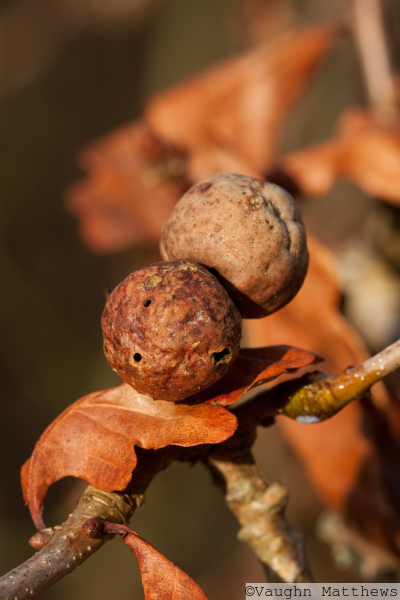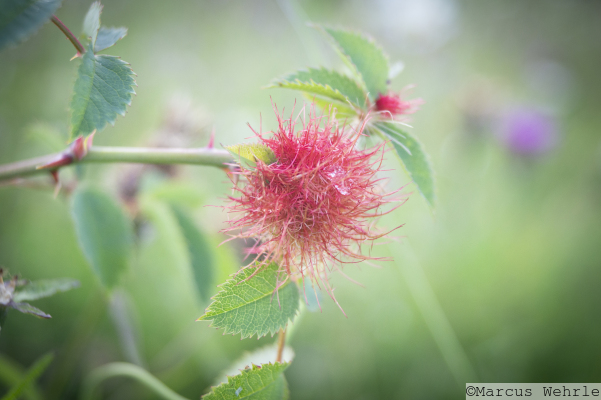Galls / Mines
<
>


 Type
Type Various
Various Status
Status Common
Common Widespread
Widespread Season
Season Summer
Summer Autumn
Autumn In the hedgerows and trees.
If you've spotted something mysterious growing on a tree recently, chances are it's a gall (sometimes called a 'mine'). These are growths on a plant that are made by plant tissue but caused by another organism, such as an insect, bacteria, fungi or virus.
Galls come in all shapes and sizes but are formed for the same purpose: the deformity is designed to enable the gall causer to use the plant for its own purposes: a parasitic relationship. The plant might not receive any benefits, but galls are not usually harmful to the host.
Some of the most common are the Oak Apple Gall, which occurs on all oak species and is caused by a female gall wasp, Biorhiza pallida, which lays her eggs inside a dormant leaf bud producing the galls. These drop from the trees in June when the larvae are mature and ready to fly. Some others affecting oak trees are the Oak Marble Gall, which are produced by another gall wasp and usually appear in clusters; and the cherry gall wasp which caused small red galls on the undersides of oak leaves.
The Robin's pincushion is a well-known spherical, red, fibrous gall sometimes called the 'bedeguar' gall, referring to a type of thistle because of its appearance. Commonly found on Dog Rose, Sweet-briar and field roses, it's caused by a rose gall wasp, Diplolepis rosae, each gall contains many larvae, each living in their own chamber inside. The gall reaches full size in late July to early August. With all of these, you're more likely to see the galls than either the adult gall wasps or the grubs.
Oak Apple Galls look like small apples on oak twigs. Oak Marble Galls are brown and almost perfectly spherical, like marbles. Robin's pincushions are spherical, red and fibrous, a bit like a thistle.


